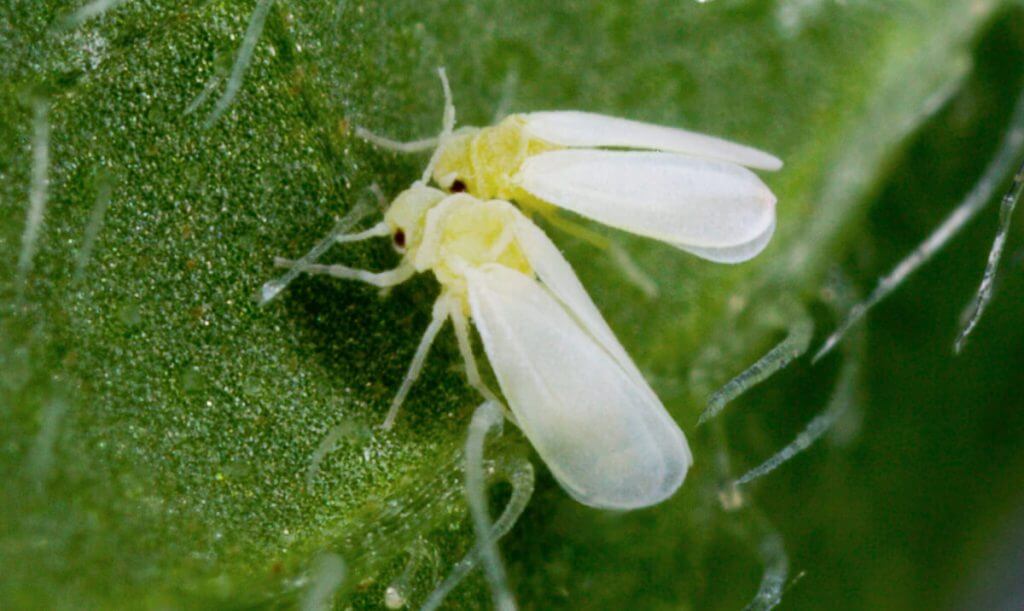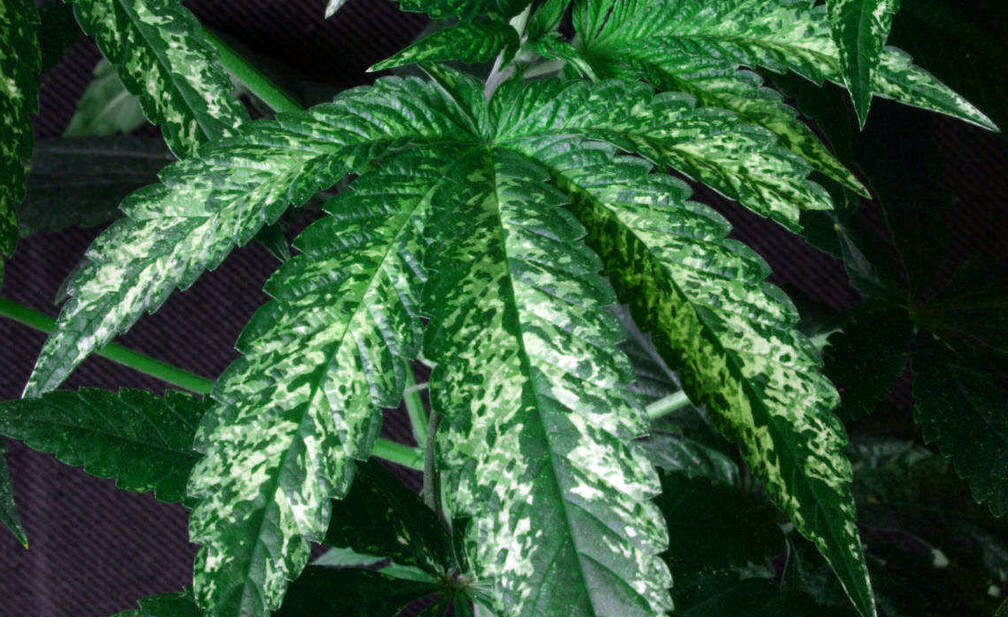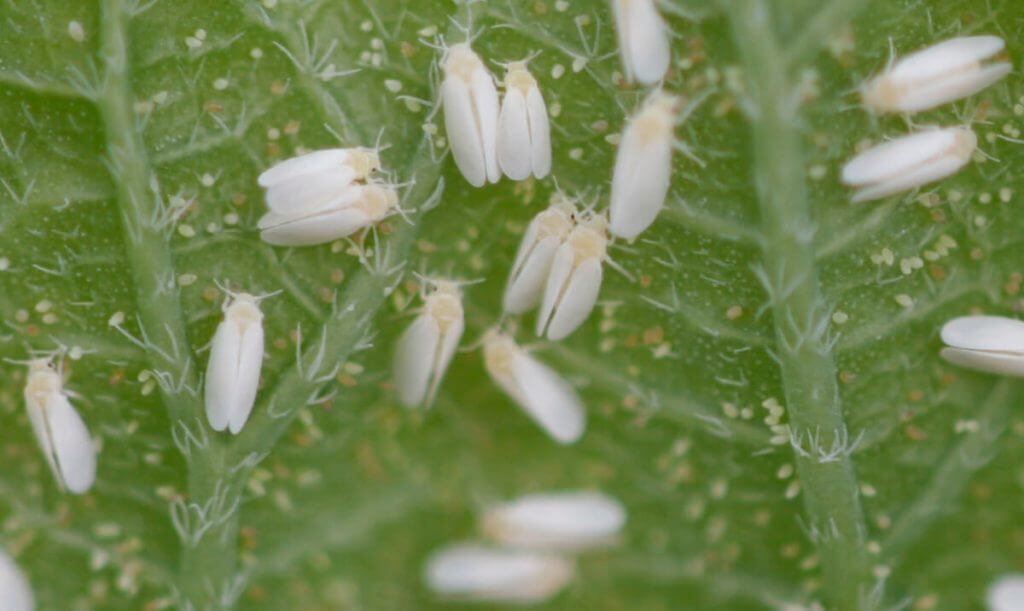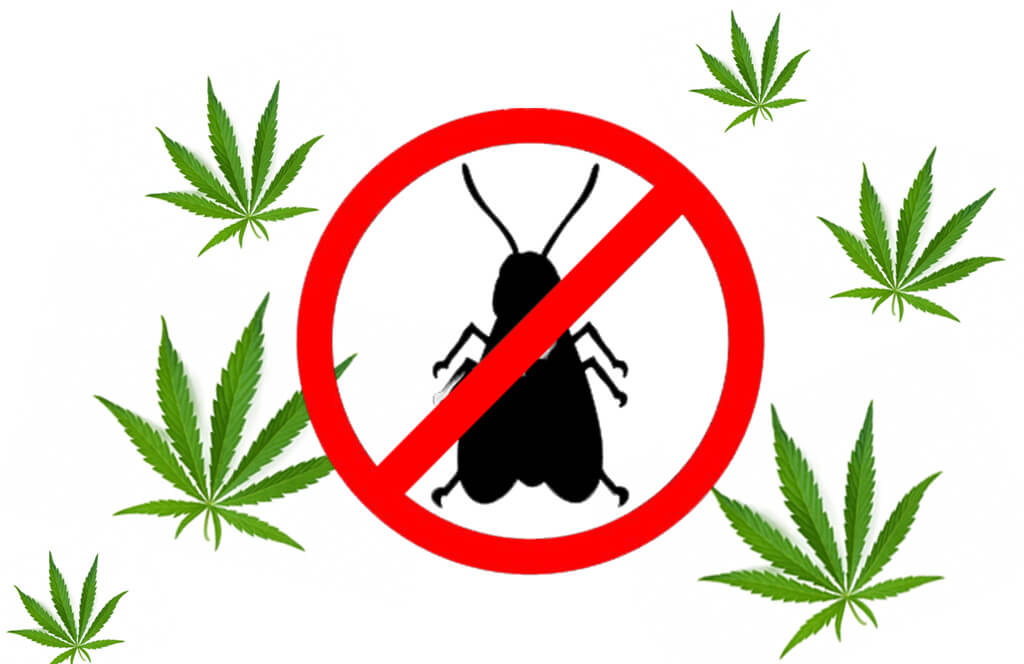Whitefly is probably one of the most common and annoying pests that can affect cannabis crops.
It is an insect belonging to the family of Aleurodidae whose most well-known species and which mainly affect the development of the cannabis plant are Bemicia Tabaci and Trialeurodes vaporariorum.
WHITEFLY
These are small white flies that measure between 1 and 3mm. Its body is divided into three parts: head, thorax and abdomen and are equipped with small wings that allow it to move between plants and make it easy for them to spread quickly through the crop.
Whitefly females lay between 80 and 300 eggs on the underside of the leaves. At approximately 24h the larvae that pass through 3 different nymphal stages known as Ínstar 1, Ínstar 2 and Ínstar 3 come out, before reaching the pupa that would be Ínstar 4. The life cycle of the whitefly lasts about 1 month.

This pest grows and reproduces quickly in warm and humid environment. The high temperatures and relatively high humidity favour its proliferation and that ir why they are considered mainly a summer pest.
The Whitefly is an annoying pest that besides causing direct damage by its action, it can cause a series of indirect damages derived from its presence in our crop.
This insect is equipped with a mouth sucking device through which it directly sucks the sap of the plants. Sap suction causes immediate damage to our plant. The first symptom is the appearance of small circles of light green color in the leaves, derived from the bite of this insect.

A characteristic symptom of this plague is chlorosis or yellowing of the leaf. The leaves eventually dry and fall off.
The attack of this plant causes a delay in growth, a decrease in the production of flowers and a general weakening of the plant that in certain very severe cases can cause its death by collapse.
Indirect damage:
Indirect damages of the Whitefly are caused by the segregation of a molasses that favors the appearance of the fungus Negrilla, which causes the blackening of the leaves which considerably diminishes its photosynthetic function. In addition, this molasses favors the appearance of other fungi and viruses and attracts other insects such as ants.
Precautionary measures.
There are some measures we can take to prevent this annoying plague. Only by performing a series of tricks can we prevent the Whitefly attack:
- 1. Use of reflectants such as silver foil or CDs to keep the whitefly away from the crop.
- 2. Cultivate basil, Chinese carnations, marigold or ornamental tobacco as they are plants that repel this plague. In this way, we can keep the whitefly away from our crop.
- 3. Neem oil: in addition to preventing whitefly, it helps keep away other pests such as mealybug, aphid or red spider mite and at the same time acts as a fungicide. If it is too late, we have not prevented its appearance and we already have infected plants, not everything is lost. We can treat them to prevent their spread and get rid of it.
Identification of the pest.
Remember, the first step is the detection and identification of the pest, the second the control and the last the eradication. As a first step, we should check the underside of the leaves frequently to check for whitefly larvae and detect the pest before it spreads.

When our plant is being attacked by a pest, it is very important to identify the insect or mite to know how we should act.
Once we know that the pest that affects our plant is the whitefly, we can carry out the following measures to control and eradicate it: Ecological methods to eliminate the whitefly whenever possible because they are much more respectful to the environment, our plants and our health.
How to eliminate the plague.
- 1. Place yellow sticky chromatic traps: whitefly adults will be trapped as they are attracted by this colour.
- 2. Spray plants with water and potassium soap: if it doesn’t eliminate the plague, it will help us to control it.
- 3. Biological control: it is a matter of introducing natural whitefly predators into the crop and they will kill the pest. The main predators of Whitefly are Encarsia formosa, Macrolophus Caliginosus, Eretmocerus Californicus, Cales Noacki or the fungus Paecilomyces fumosoroseus.
- 4. Spraying the plants with tanaceto, wormwood or ponytail infusions to control and eliminate the plague. They are natural remedies that help kill the whitefly population.
- 5. Natural insecticides such as pyrethrins or rotenone may also be used. Chemicals should be used when the pest affects crop severely and only as a last resort when the other alternatives have not worked.

Furthermore, we shouldn’t use this type of product when our plants have started flowering. So, chemical products will have to be automatically discarded if we are in this stage.
Advice
We must remember that this plague is resistant to chemical insecticides, so we must alternate them with natural remedies to be able to kill it.
In addition, these products also remove predators from the whitefly, so wherever possible, we should use an environmentally friendly method to kill pests and choose chemicals only as a last resort.
The whitefly in marijuana
The best way to fight the Whitefly is prevention, so keeping our growing area clean and disinfected, check frequently the underside of the leaves and use some preventive such as Neem oil, is the best option to avoid the attack of this plague.



